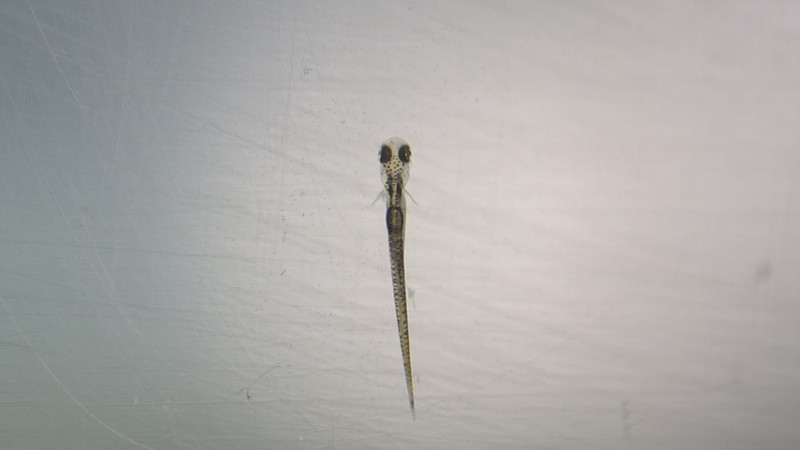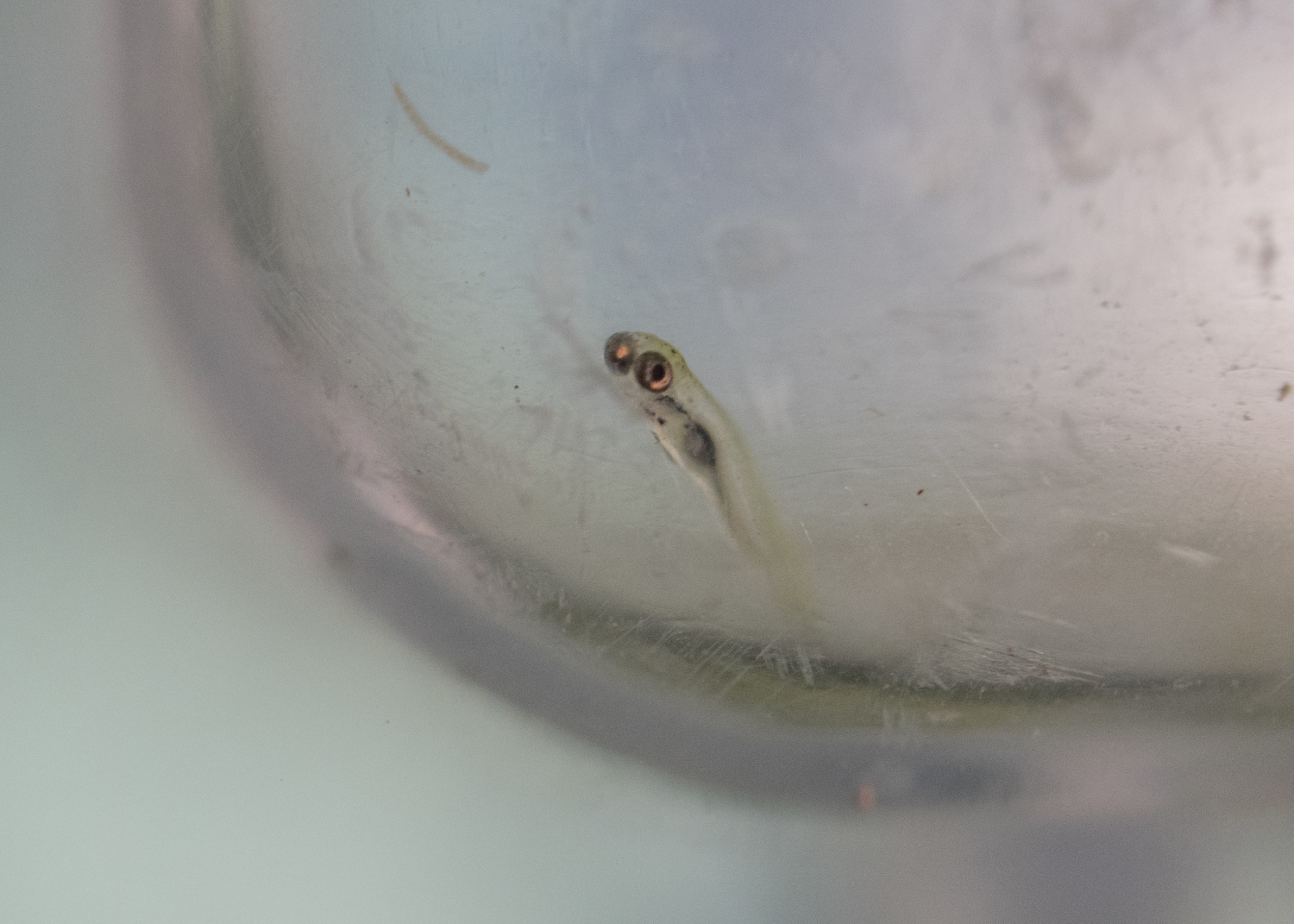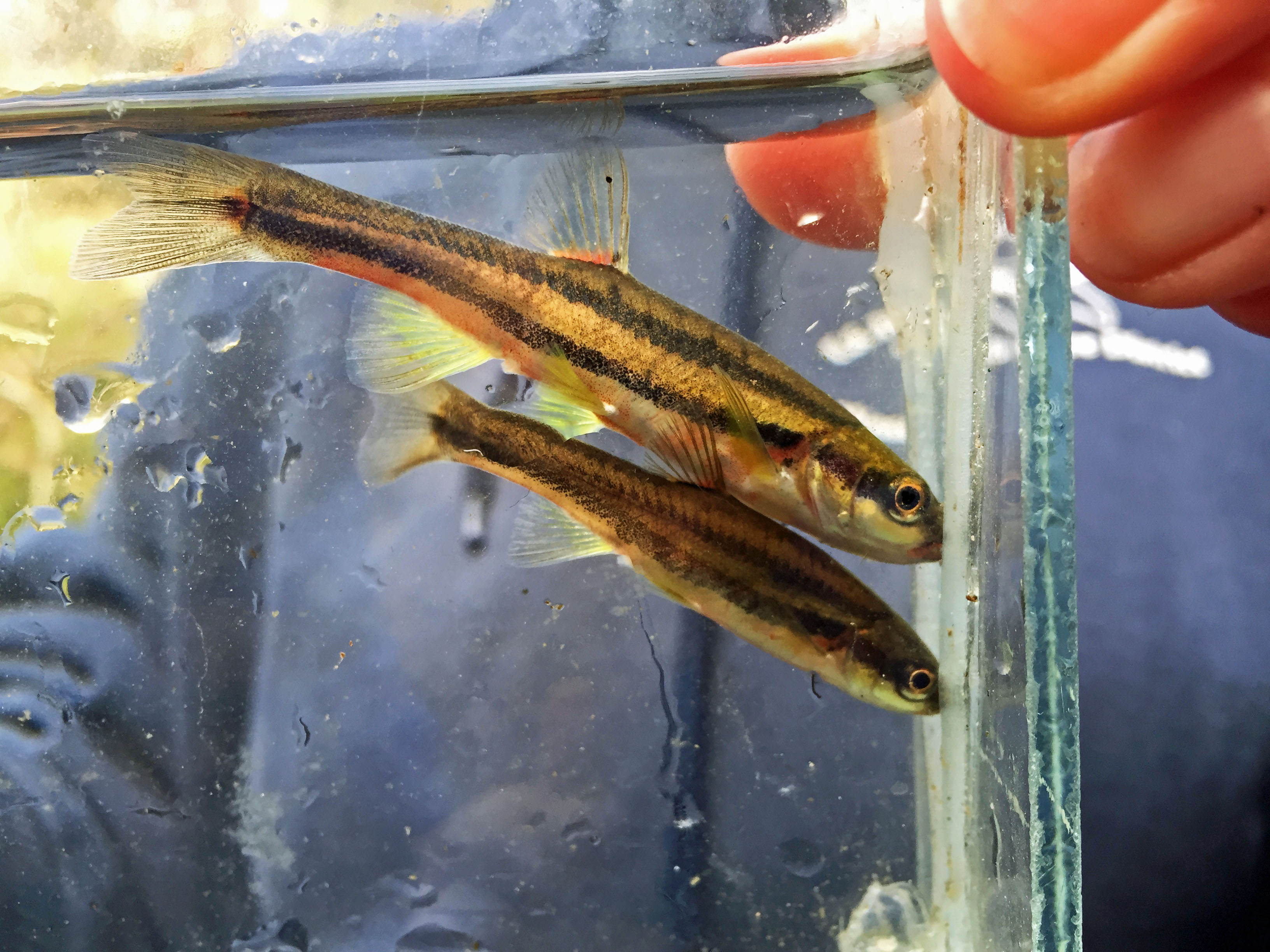More than 450 endangered Laurel Dace fish recently hatched from eggs spawned at the Tennessee Aquarium Conservation Institute, according to a news release from the aquarium.
The tiny, nearly-translucent juveniles are the offspring of 29 adult Laurel Dace living at the institute.
The Laurel Dace, a green-bodied and red-bellied native fish, were rescued 18 months ago from rapidly dwindling streams on Walden Ridge north of Chattanooga. The brood stock is being kept at the institute to propagate this federally endangered fish and includes 19 adults recently collected from Bumbee Creek in Rhea County and 10 rescued from the same stream during the historic drought that baked the Southeast in the latter half of 2016, according to the release.
"Recent surveys have indicated that the Laurel Dace are persisting in only two streams out of their historical range of eight," said Tennessee Aquarium Reintroduction Biologist Meredith Harris. "This puts the species at a higher risk of extinction whenever we experience extreme weather events."
The birth of hundreds of baby Laurel Dace in the propagation room at the Tennessee Aquarium's freshwater science center represents an important step in securing a better future for the species, Harris said.
"We're getting more eggs weekly," she said in the release. "It seems promising that we'll be able to develop the right methods to propagate them and eventually reintroduce them in the future."
Before a historic, months-long drought hit the Southeast in November 2016, the Laurel Dace had already been struggling due to runoff sedimentation from area farms. Silt covered the bottom of its native waterways, smothering eggs and any newly hatched larvae.
Things got worse when the dry spell withered the streams where the Laurel Dace was known to live. The few remaining fish were forced into rapidly diminishing pools of water, where they were isolated and trapped.
To help safeguard against the possibility of extinction, biologists from the Tennessee Aquarium Conservation Institute and U.S. Fish and Wildlife mounted a rescue operation and collected 18 Laurel Dace from creeks on the Cumberland Plateau.
Eventually, the rains returned, the creeks rose and the remaining Laurel Dace persisted. Some of the rescued fish were retained in human care so scientists could determine how most effectively to care for them and the best methods to propagate them.
For a species that's on the brink and under-studied, developing these protocols is a critical step to ensuring scientists can safeguard the fish from future calamities, Harris said.
"We've been doing reintroduction and propagation protocols with many other species at the Conservation Institute, but this is the first time that we've worked with anything in this group of minnows. It's very different," she said in the release. "We're feeling our way through it, but the results look really promising so far."



